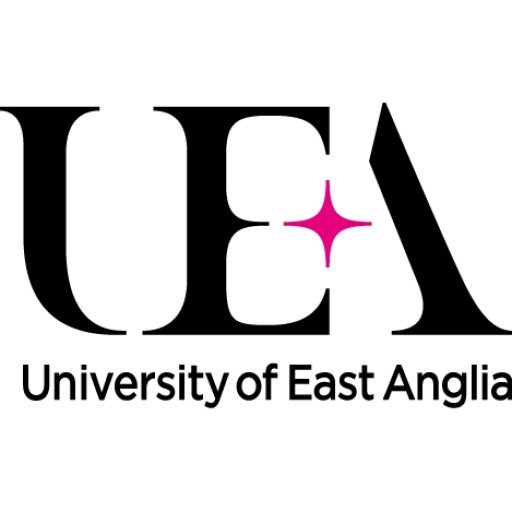Photos of university / #_londonu
The MSc in Quaternary Science at the University of London offers a comprehensive and interdisciplinary approach to understanding the Earth's recent geological past, focusing on the last 2.6 million years of climate change, environmental evolution, and human interaction. This programme provides students with a deep understanding of the key processes and artifacts that have shaped the landscape, climate, and ecosystems during the Quaternary period. Through a combination of rigorous coursework, practical fieldwork, and independent research, students will acquire essential skills in stratigraphy, palaeoenvironmental reconstruction, archaeological analysis, and data interpretation. The programme is tailored for those who aspire to careers in academia, environmental consultancy, heritage management, or scientific research, equipping them with the tools necessary to analyze climate variability, human-environment interactions, and natural hazards. Delivered by leading experts in the field, the course emphasizes both theoretical knowledge and practical application, using state-of-the-art laboratories, GIS technology, and field sites to foster experiential learning. Students will explore topics such as glaciations, sea-level changes, palaeoclimatology, early human evolution, and the preservation of environmental records in sediments and ice cores. The flexible learning structure enables students to undertake part-time or full-time study, making it suitable for a diverse range of learners, including working professionals. Upon completion, graduates will be well-equipped to contribute to scientific research, policy-making, and conservation efforts related to climate and environmental change. The MSc in Quaternary Science aims to deepen understanding of our planet's recent history, support sustainable environmental management, and promote scientific literacy in tackling contemporary environmental challenges.
The MSc in Quaternary Science at the University of London offers a comprehensive and interdisciplinary approach to understanding the last 2.6 million years of Earth's history. This programme is designed to equip students with the knowledge and skills necessary to interpret climatic, environmental, and geological changes during the Quaternary period, a critical epoch that encompasses the most recent ice ages and interglacial periods. Students will explore a wide range of topics, including glaciology, paleoclimatology, sedimentology, palaeoecology, and human evolution, gaining a holistic perspective of the complex interactions between climate, environment, and human activity over time.
The curriculum is structured to provide both theoretical foundations and practical skills. It includes lectures, seminars, and laboratory work, as well as field-based modules that allow students to directly observe and collect data from natural settings. The programme emphasizes critical analysis of scientific data, methodologies for dating and interpreting geological and biological records, and the use of modern technologies such as GIS, remote sensing, and geochemical analysis.
Students will have access to state-of-the-art facilities and resources, including laboratories equipped for geochemical and sedimentological analyses, as well as extensive digital databases and software for data modelling. The programme also offers opportunities for independent research projects, allowing students to specialize in areas of their interest, such as glacial history, sea level change, or Pleistocene environments.
In addition to core modules, students can choose from a variety of optional subjects to tailor their learning experience according to their career goals. The programme prepares graduates for careers in environmental consulting, academia, government agencies, and international organizations involved in climate change research and environmental management.
Throughout the programme, students will develop essential skills in scientific research, data interpretation, report writing, and presentation, ensuring they are well-equipped to contribute to the growing body of knowledge in Quaternary Science. The University of London’s global reputation and the diverse expertise of its faculty provide an excellent environment for advanced study and professional development in this dynamic field. Upon completion, graduates will be prepared to make meaningful contributions to understanding our planet’s recent history and to addressing contemporary environmental challenges.
The MSc in Quaternary Science at the University of London requires applicants to hold a good honours degree in a relevant scientific discipline, such as geology, geography, environmental science, or archaeology. Prior work or research experience in related fields may be considered as part of the application. The program emphasizes interdisciplinary approaches, combining methods and theories from various scientific disciplines to understand the Quaternary period, which encompasses the last 2.6 million years of Earth's history. There are no specific prerequisite courses, but applicants should demonstrate a strong interest in climate change, glaciology, palaeoecology, and stratigraphy.
The program structure consists of core modules, optional modules, and a dissertation. Core modules typically include Introduction to Quaternary Science, Climate Change and Palaeoenvironmental Reconstruction, and Methods in Quaternary Research. Optional modules offer the flexibility to specialize in areas such as Geoarchaeology, Palaeontology, Sedimentology, and Geographical Information Systems (GIS). To successfully complete the degree, students must accumulate a total of credits as specified in the curriculum, which usually includes completing assessed coursework, participating in practical seminars, and undertaking a research dissertation.
Assessment methods include written assignments, project reports, presentations, and the dissertation. The dissertation involves original research conducted under supervision, allowing students to apply their acquired skills to a specific research question within Quaternary Science. Throughout the program, students are expected to develop scientific research skills, critical thinking, data analysis, and scientific communication.
International applicants are required to demonstrate proficiency in English through recognized tests such as IELTS or TOEFL if their previous education was not conducted in English. The program is designed to be completed within one year for full-time students and up to two years for part-time students. Admission is competitive, and applicants are advised to submit a complete application, including academic transcripts, a statement of motivation, and references, by the specified deadline. Upon successful completion, graduates will be equipped with the knowledge and skills to pursue careers in academic research, environmental consulting, heritage management, and other sectors related to Earth sciences and climate studies.
The financing of the Quaternary Science programme at the University of London is primarily composed of a combination of tuition fees paid by students, government funding, and occasional scholarships or bursaries available to eligible applicants. Tuition fees vary depending on the student's residency status and the specific mode of study—whether full-time or part-time. For international students, fees are generally higher than those for domestic students, reflecting the standard practice across the university’s programmes. The university provides a transparent fee structure published annually on its official website, enabling prospective students to plan their financial commitments accordingly.
In addition to tuition fees, students may have access to various external funding options such as government-sponsored student loans and grants, particularly in the UK where financial support schemes are robust for higher education. International students are often encouraged to explore scholarships offered through government programs in their home countries, as well as university-specific bursaries designed to support international entrants. The University of London also offers a limited number of scholarships specifically aimed at students enrolling in Earth sciences and related disciplines, which can significantly offset the costs of study.
Financial aid packages can also include work opportunities within the university, such as research assistantships or teaching assistant roles, which provide stipends and tuition fee waivers. The university emphasizes equal opportunity and aims to support students facing financial difficulties through its student support services. Students are advised to apply early for financial aid and closely review eligibility criteria for scholarships, bursaries, and loan schemes. Overall, the programme's financing structure is designed to provide accessible pathways for students from diverse financial backgrounds, ensuring that potential students are aware of the available funding sources and planning their studies accordingly.
The MSc in Quaternary Science at the University of London offers an interdisciplinary approach to understanding the Earth's recent geological past, focusing on the last 2.6 million years. The programme provides students with comprehensive knowledge and practical skills to analyze climatic fluctuations, glacial and interglacial periods, human evolution, and environmental changes during the Quaternary period. It combines theoretical coursework with practical training in various research techniques, including sediment analysis, paleontology, palynology, and geochronology. The curriculum covers a broad spectrum of topics such as climate change, archaeology, geography, and environmental science, enabling students to develop a holistic understanding of the Earth's recent history. The programme is suitable for students aiming to pursue careers in academia, research, environmental consultancy, or heritage management. Students benefit from access to advanced laboratory facilities and fieldwork opportunities, enhancing their practical experience. The programme also encourages critical thinking and research skills, culminating in a dissertation that allows students to investigate a specific aspect of Quaternary science in depth. With faculty members who are experts in the field, students gain insights into cutting-edge research and current scientific debates. The programme is delivered through a combination of online learning and optional residential sessions, making it accessible for international students and working professionals. Overall, the MSc in Quaternary Science prepares graduates for a wide range of professional opportunities and contributes to understanding critical environmental and climatic issues facing the planet today.





